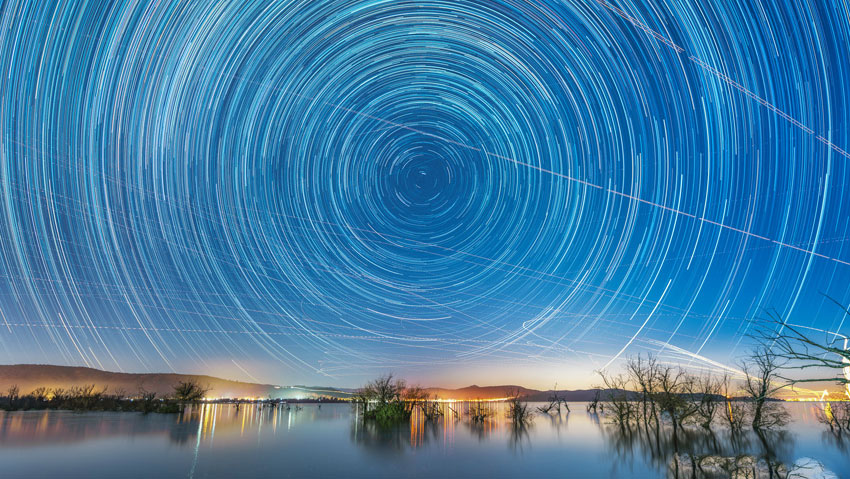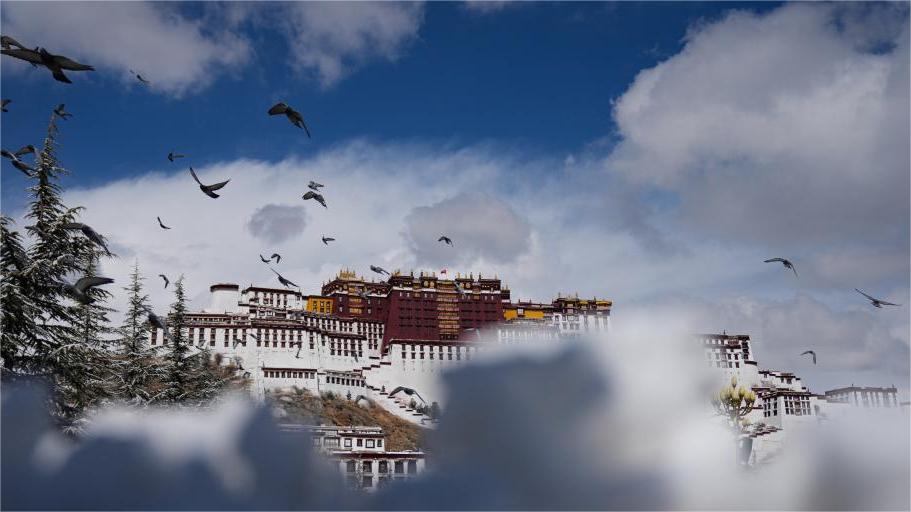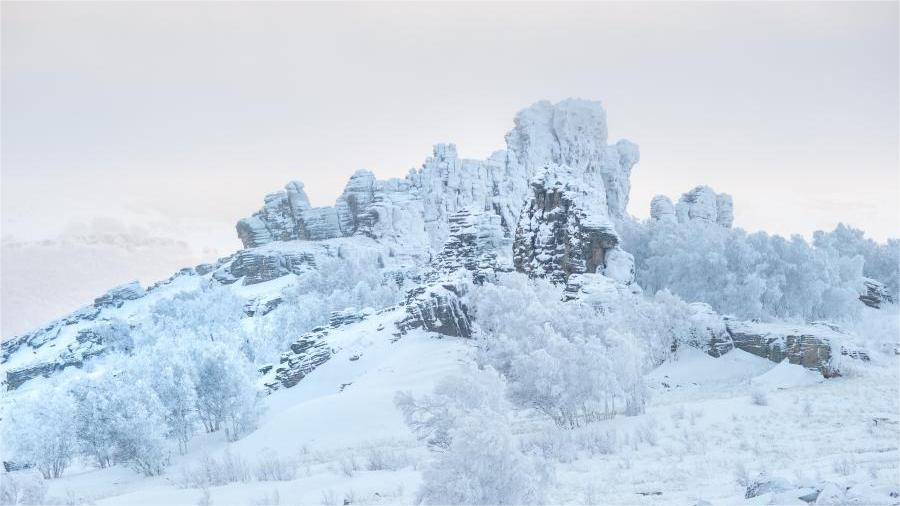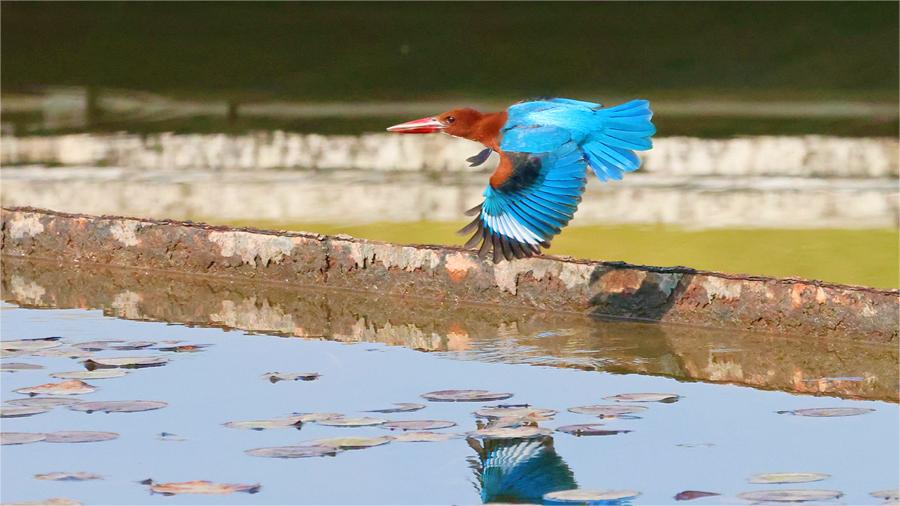China's tourism market sees new momentum
The arrival of winter triggered a boom in ice and snow tourism in Harbin, northeast China's Heilongjiang Province.
According to data released by Tujia, a Beijing-based online platform for booking B&B hotels, over 90 percent of B&B hotel rooms in Harbin were booked during the New Year holiday, while reservations in Daxing'anling prefecture, Daqing city, and Jiamusi city in Heilongjiang surged by 5-10 times year on year.
"Almost all of our 24 rooms are booked every day," said Guo Wei, who runs a B&B hotel in Harbin.
According to a report on China's winter tourism released by the China Tourism Academy, the number of people participating in ice and snow-related leisure tourism in China is expected to increase by 25 to 30 percent during the 2023-2024 winter season. The country's ice and snow leisure tourism sector will receive over 400 million visitors during the season, with its revenue expected to hit 550 billion yuan ($77.25 billion).
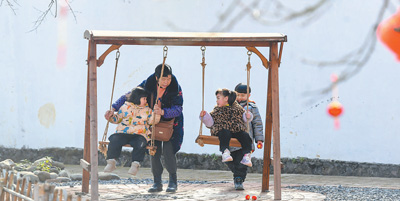
Tourists play on a swing at a courtyard in Ningyuan county, Yongzhou city, central China's Hunan Province. (Photo/Jiang Keqing)
"We can now clearly feel the recovery of the cultural and tourism market," said Lu Shan, manager of a B&B hotel near the West Lake scenic area in Hangzhou, capital of east China's Zhejiang Province.
Lu, who has been engaged in the B&B business for over 12 years, often introduces new services to keep up with the upgrading of cultural and tourism consumption.
Since the beginning of this winter, she has introduced to her B&B hotel a popular activity called "stove-boiled tea," which has been well-received by many guests.
"With the upgrading of cultural and tourism consumption, tourists no longer just want to enjoy the scenery. They also want to immerse themselves in the local lifestyles, and experience local culture," the woman said.
The Chinese cultural and tourism market is continuously booming. Data from the Ministry of Culture and Tourism showed that domestic destinations across China recorded over 3.67 billion tourist visits in the first three quarters of 2023, 1.58 billion more than in the same period the previous year, representing a year-on-year growth of 75.5 percent.
During the corresponding period, total domestic tourism spending hit 3.69 trillion yuan, a year-on-year increase of 1.97 trillion yuan and surged 114.4 percent.
"The thriving cultural and tourism consumption reflects the vitality and enormous potential of the consumer market," said Zhang Jinshan, director of the tourism industry economic research institute at Beijing Union University.
The booming cultural and tourism market can be attributed to the supply of innovative products. Many scenic spots and tourism-related enterprises are keeping up with the new trends in cultural and tourism consumption. They are creating new cultural and tourism products, new business models, and new scenarios, offering more high-quality products and services that meet the needs of tourists. This is igniting even stronger vitality in the cultural and tourism market.
The Mogao Grottoes, a United Nations Educational, Scientific and Cultural Organization (UNESCO) World Heritage Site in Dunhuang city, northwest China's Gansu Province, has launched a digital exhibition hall, in which tourists, with virtual reality headsets, can break free from the constraints of time and space and enjoy the exquisite murals dating back more than 1,400 years. Tourists can also dive into the rich stories of the site with a mini program on their mobile phones.
In November 2022, the item "traditional tea processing techniques and associated social practices in China" was added to the intangible cultural heritage list of the UNESCO.
Pan'an county in Zhejiang Province opened up a tea-related tourism route, established ancient tea tree conservation parks, and integrated scenic and tea areas, forging a new path of tea-tourism integration to boost common prosperity while attracting throngs of tourists every year.
"New technologies serve as important tools for innovation in cultural and tourism products and services," said Yang Hutao, a professor at the Institute of Economics of the Chinese Academy of Social Sciences.
Yang believes that with the support of digital technologies such as short videos and livestreams, more and more beautiful sceneries and cultural products are becoming known to the public, which help create tourism brands with greater influence and activate more tourism resources.
With nearly 600 years of history, Huangling village in Wuyuan county, east China's Jiangxi Province, is surrounded by terraced fields and features houses built on steep slopes.
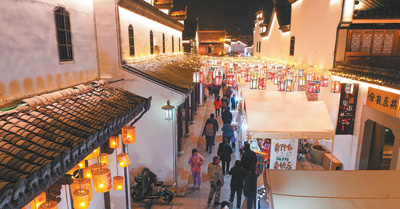
Photo shows tourists at a scenic area in Dongyang city, east China's Zhejiang Province. (Photo/Bao Kangxuan)
During the autumn harvest seasons, villagers would sun-dry farm produce on their rooftops, creating a unique landscape, said Cao Jinzhong, president of Wuyuan Huangling Cultural Tourism Co., Ltd.
To attract tourists, the Huangling scenic area posted short videos on Chinese popular short-video platform Douyin, launched hashtags like "Let's sun-dry together," and held contests to encourage travel influencers, photographers and tourists to visit and publish posts.
"In the first quarter of 2023, over 50 percent of tourists to Huangling scenic area had watched relevant videos before coming here," Cao said.
According to reliable data, users of Douyin visited over 150,000 tourist attractions in rural areas across the country, and created more than 60 million related short videos last year, contributing to making more villages popular tourist destinations.
Photos
Related Stories
- Chinese tourists flock to savor trendy immersive experiences
- China reports booming cross-border travels in 2023
- Provinces wage cutthroat competition to woo visitors
- Exploring the land of the dragon: Essential tips for traveling to China
- Agritourism industry in China's Jiangsu surpasses 100-bln-yuan mark
- Social media fuels tourism boom in China
- Growing north-south travels underline winter tourism vigor
Copyright © 2024 People's Daily Online. All Rights Reserved.






